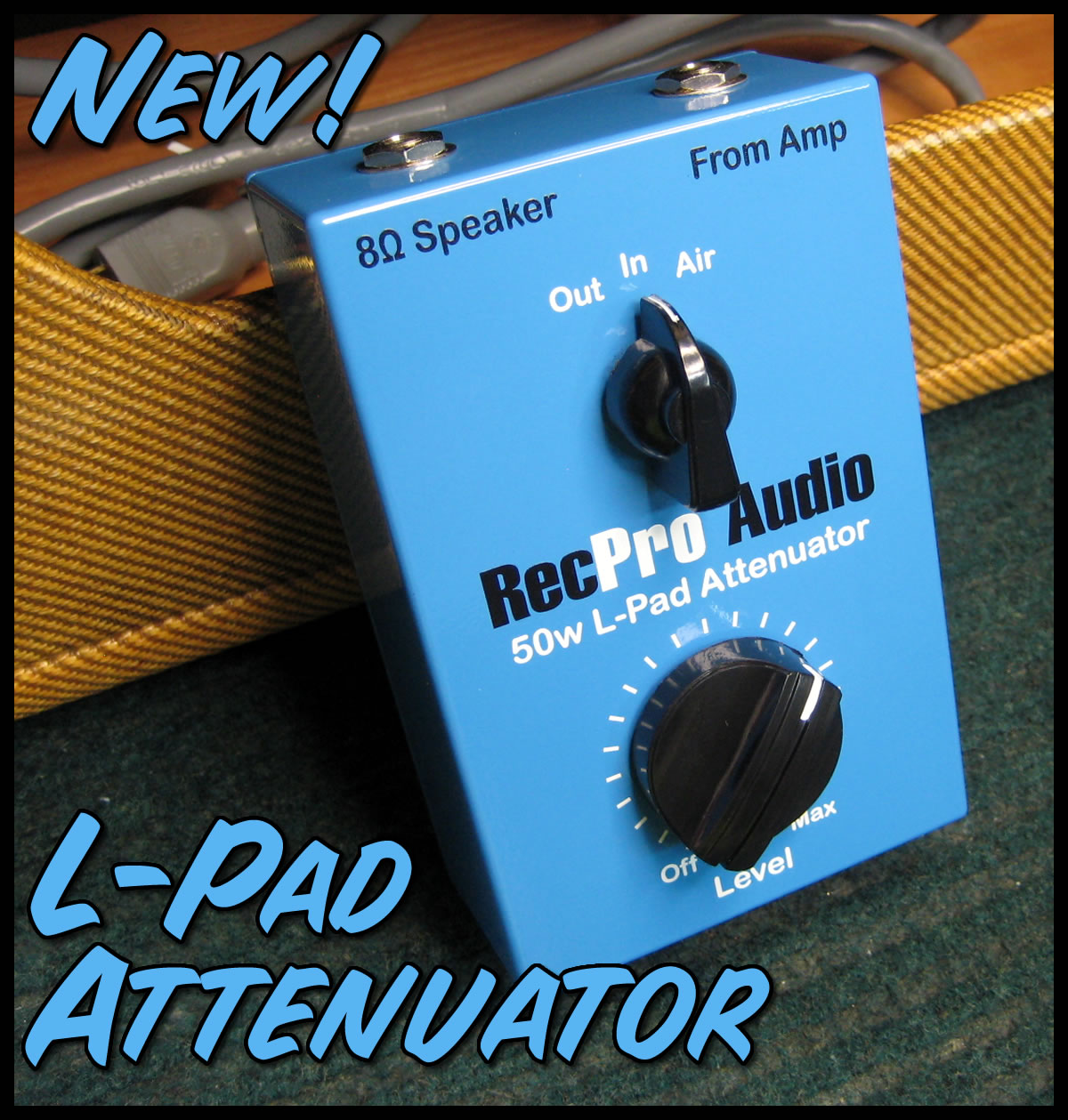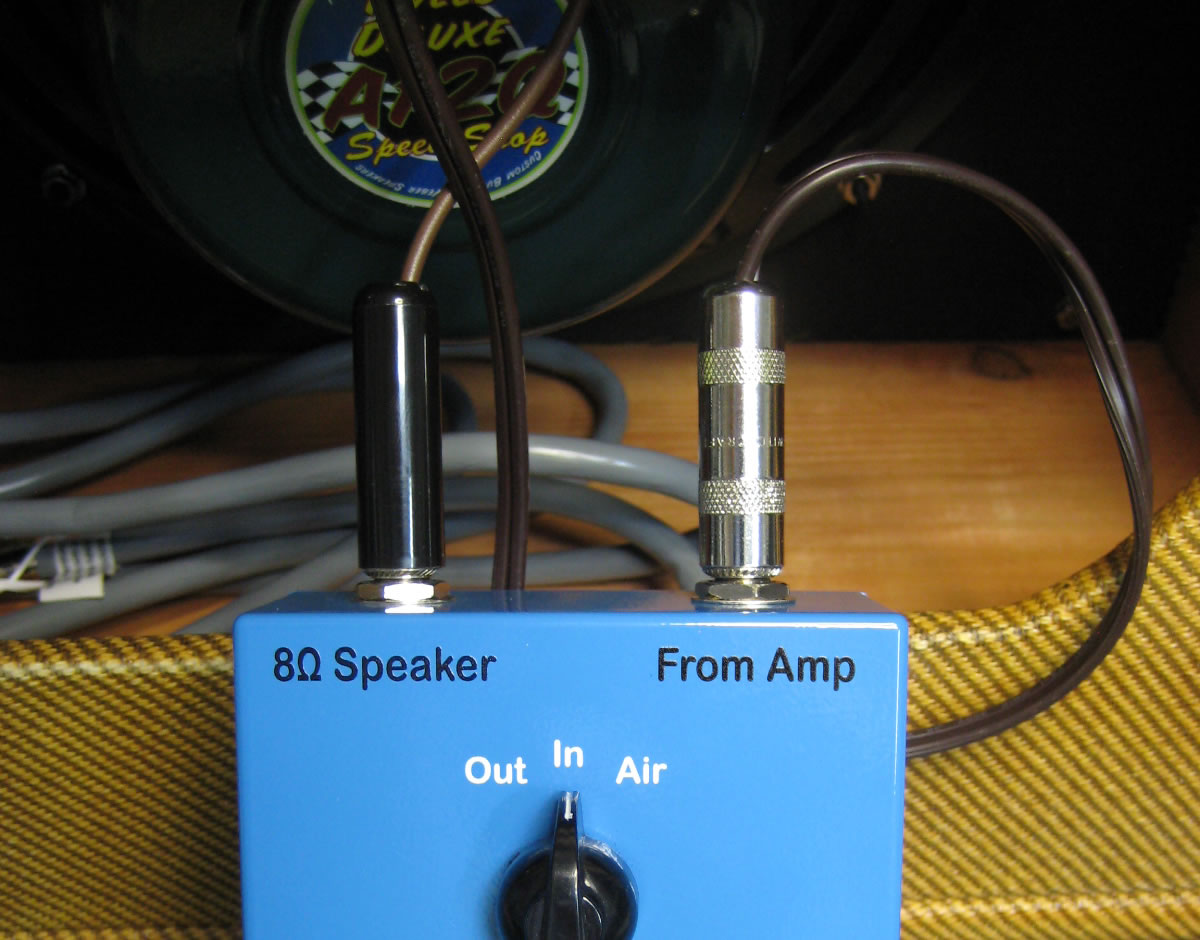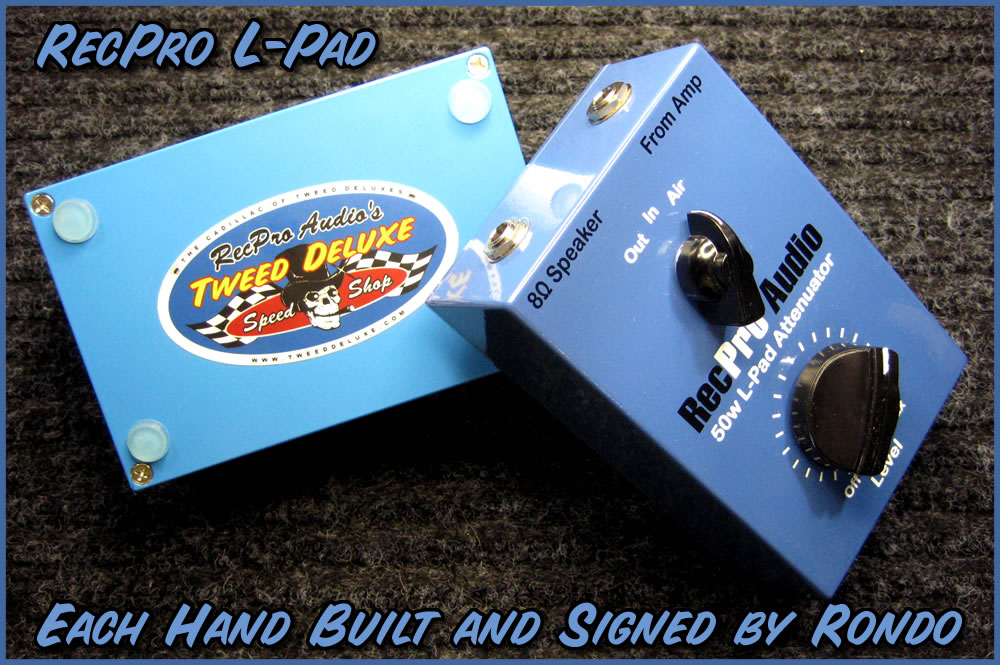 RecPro Audio L-Pad
RecPro Audio L-Pad

 4/1/23: 4/1/23:Hi Everyone, I'm pleased to announce the RecPro Audio L-Pad, a new small-amplifier attenuator. My first impression with the L-Pad prototype was that it worked just great and I knew right away I wanted to build them to offer with my amps as well as to others - à la carte. What follows are my notes on the new L-Pad - and attenuation in general. Works great: In my experience, this simple L-Pad does the job perfectly and [likely] sounds just as good as most others (given the limitations imposed by the act of attenuation itself). In other words, you're never going to get the same experience at bedroom levels compared to cranked up on a stage. The important thing is that the sound doesn't turn you off and make you not want to play. This attenuator is very musical and I'm still surprised how well it works. I will use it all the time as the l-pad has uses beyond just playing overdriven at very low levels. Attenuators and high frequency loss: There is some [actual, not perceived] high frequency reduction with attenuation. As level is reduced, high frequencies over 10k are pulled down in greater proportion versus the rest of the spectrum - until about mid-way. From there, the response curve remains constant all the way down to the zero [off] position. The result is a nice, easy, high-end rolloff at light attenuation, coming from the top down - which I think is just great. It works like a high cut, very gentle, and with heavier attenuation any lost highs can be restored by simply turning the tone control on the amp up a bit (I almost never dime the tone control, so there is usually room to turn it up). No tone sucking at all. Kind of like an effect that works subtly, and well. Sometimes seemingly enhancing tone. A further note about attenuation: In my opinion, there is no way to heavily attenuate an amp and still have the same experience as compared to the amp not attenuated. There are a few reasons, including the loss of highs, both real and due to perception (F-M curve), but beyond that is the fact that the speaker isn't working as hard and therefore is not contributing as much character. Also, with less volume the ambient response of the room is going to contribute less to the overall sound. However, I was very surprised to hear how little these things matter. The amp sounds absolutely great with light attenuation, and heavily cut overdrive sounds totally fine - a little darker perhaps, but completely playable and inspiring. You can totally practice with it at bedroom levels and the tone is going to be really good, certainly good enough to not be put off playing. Reactive load?: Again, with heavy attenuation I don't know if it matters, or if anyone could tell the difference. But, as the amp speaker is still in parallel with the pad there is some reactance anyway, so it's not a total dummy-type load. Air: Most attenuators employ a capacitor bypass "bright" switch that is intended to restore lost highs due to attenuation. However, switched-in, this cap does so little it is almost imperceptible. Looking at the spectrum, there is indeed a boost of highs with the cap engaged, but its all above 15k - at the limit of human hearing. So, I prefer to call it "air" rather than "bright" and in some situations it may add a touch of highs that you may find adds to your tone, as well as upper harmonic content. I find it almost impossible to hear, but I think it does add something and it changes the feel a bit, especially with cleaner single coil tones. DIY: This L-Pad is a very simple device and you can make your own if you are up for it. (There are schematics out there.) I decided, however, to make them for those customers of mine who would prefer to simply buy them assembled. That said, I don't do anything half-baked, so the enclosure is properly milled and powder-coated with graphics UV printed. The parts are generic (but well made) and I personally assemble (and sign) each unit. There are many attenuators available out there and most are fairly expensive, so this one is a bit of a bargain. Specs: All components are connected with proper heavy-duty speaker wire. Dimensions are approximately 6" x 4" x 3". Weight is 1 lb., 2 oz. Intended Use: 5-20 Watt, 8 ohm output amplifiers (Tweed Deluxes and similar small amps). Please note: It is recommended to limit all L-Pad applications to less than their rated power; especially when overdriving amps while using heavy attenuation. Therefore, even though the manufacturer actually rates the attenuator component at 100 watts; it is best to restrict use to 20 watt (and under) 8-ohm output amplifiers. Connections: To use, the L-Pad has standard 1/4" TS jacks that accommodate its placement between the amp speaker-out jack and the speaker (or cabinet) itself. For use with a small tweed amp, the speaker lead may be long enough to plug straight into the L-Pad (see photo below) and in this case only one short speaker lead would be needed to connect the amp's speaker-out to the L-Pad input. (I use lamp-cord for most speaker leads and simply solder a couple of Switchcraft 1/4" plugs on each end.) Otherwise, if you are using a separate (external) speaker cabinet, or want to use the L-Pad some distance away from the amp, you will need two speaker leads with the appropriate plugs. To be clear, no speaker leads, or cables, are included with the L-Pad - customers are responsible for their own particular connection requirements. "The L pad is killer. It’s going to stay permanently in my p2p combo." - C. M. 

RecPro Audio L-Pad is $199. $15 flat rate USPS shipping on all USA orders. US sales only at this time, please email regarding international orders. Please allow 1 week for delivery. Thank you, all,  |
 Order Your RecPro Audio L-Pad Below:
Order Your RecPro Audio L-Pad Below:
|
|


Tweed Deluxe Speed Shop | PO Box 855 | Sanibel, FL 33957 ![]()
Landline: 239-689-5941 (do not text)
Other RecPro Audio Sites:
Pultec EQP-1a Kit |
RTB Preamp | RTB Compressor
Legacy DIY Site: RecProAudio
Copyright © 2010 - 2025 RecPro Audio - All Rights Reserved
Website by Rondo